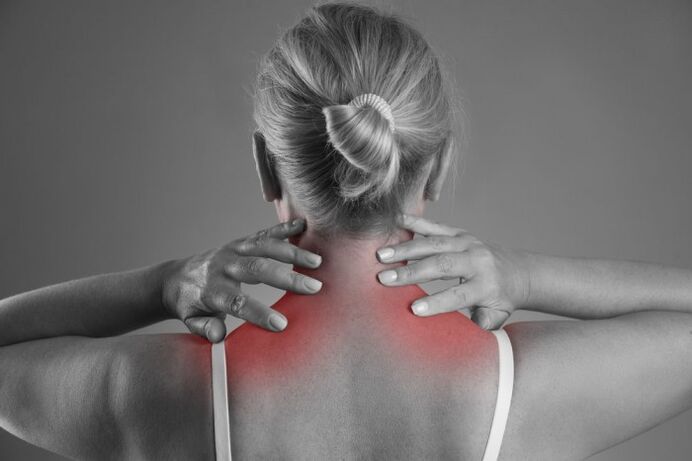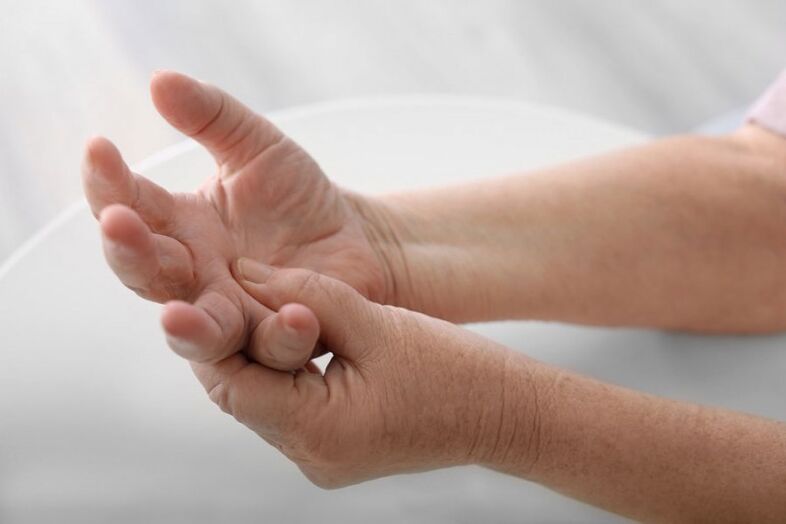
The life of a modern person is associated with constant overloads to which the spine is exposed. And if previous diseases of this important organ were found mainly in mature and elderly people, today, according to medical statistics, representatives of the younger generation are increasingly facing these problems. The leader in this group of diseases iscervical osteochondrosis(SHOOH). This pathology causes many inconveniences for the person.
Therefore, it is worth knowing the reasons for its appearance and the treatment methods.
What is cervical osteochondrosis
For a long time, most people try not to notice unpleasant discomfort in the neck region, referring to the usual overexertion and tiredness. But over time, the pain adds to the discomfort of moving the head, and other unpleasant symptoms appear. And only when the situation becomes critical, the person seeks medical help and learns that they have cervical osteochondrosis.
This disease often affects both sexes. As already mentioned, nowadays it is often found in very young people under 30 years of age. This phenomenon is largely due to the introduction of computer technologies into all walks of life. People just stop moving and spend most of their time pinned to the monitor. As a result, pathological changes begin to occur in the cervical spine: the vertebrae are displaced and the cartilaginous tissues between them, which represent a kind of layer, become thinner. In other words, an overgrowth of connective tissue occurs when formations in the form of growths appear in the vertebral body.
The consequence of such pathological changes is the reduction of the shock absorption effect between the vertebrae, the bone surfaces, in contact with each other, causing friction and compressing the nearby nerves and blood vessels. All of these pathological changes lead to a deterioration in the blood supply to the later parts of the brain, which causes a deterioration in general well-being and pain. If the problem is not resolved in a timely manner, the disease will progress and, in severe cases, it can even lead to disability.
Causes of cervical osteochondrosis
Not too long ago, the main causes of SHOC were always associated with age-related changes in the body. But in the realities of modern life, factors have emerged that increase the risk of developing pathology at a younger age.
Some of these reasons include:
- sedentary lifestyle;
- forced standing in one position (usually sitting);
- overweight;
- autoimmune diseases;
- drafts;
- stressful situations;
- lesions in the cervical or occipital region;
- congenital anomalies of the spine;
- disturbance of metabolic processes.
In some cases, the disease develops as a result of hormonal disturbances or unfavorable heredity.
Symptoms of Cervical Osteochondrosis
In contrast to pathological processes in other parts of the spine, SHOX is more pronounced. This feature is explained by the fact that in the cervical spine the vertebrae are very close to each other, so the height of the intervertebral discs is small. This anatomical feature contributes to a greater extent than in other parts of the spine, compression of nerve tissues and blood vessels. Therefore, the main symptoms of the disease are located in the upper back, cervical region and head.
In this case, patients have the following complaints:
- limited mobility of the neck, especially if you want to turn your head;
- intense pain, which often does not allow the person to perform an elementary action (bending, turning the head);
- characteristic crunch when moving;
- decreased sensitivity in the hands;
- violation of movement coordination;
- dizziness;
- general weakness;
- decreased vision and hearing, tactile sensitivity or taste perception.
As the cervical spine is made up of eight vertebrae, depending on the location of the dystrophic lesion, the disease has its own characteristic signs. Typically, in these departments, there is a disturbance in sensation or restriction of mobility as a result of compression of the spinal roots. Therefore, cervical osteochondrosis is differentiated by radicular symptoms, that is, one takes into account which vertebrae is involved in the pathological process.

The symptoms of cervical osteochondrosis can be as follows:
- the first vertebra - sensitivity decreases and numbness is noted in the occipital region and neck;
- the second - pain in the back of the neck and in the parietal region;
- third - pain in the neck region where the root is pinched, speech and taste perception are also impaired;
- fourth - pain radiating to the shoulder, under the scapula, respiratory disorders may be observed;
- fifth - pain in the neck, radiating to the shoulder;
- sixth - the pain in the neck extends to the forearm and thumbs in the hand;
- seventh - pain radiating to the scapular region, shoulder, forearm and fingers;
- eighth - the pain spreads from the neck to the shoulder and further down the arm to the little fingers.
It should be emphasized here that the diagnosis pays special attention to the extent of the lesion. Because this criterion determines the degree of cervical osteochondrosis. There are only four and determine the severity of the pathological process.
disease diagnosis
It should be noted that an experienced physician can easily diagnose cervical spine osteochondrosis during the initial examination, focusing only on characteristic clinical symptoms. But to determine the degree of damage and the prevalence of the pathology, it is recommended that the patient undergo a series of tests.Basically, these are all hardware research methods. The diagnosis of cervical osteochondrosis includes:
- Radiographic examination of the cervical spine. In the diagnostic process, the degree of damage, location, salt deposits and characteristics of the location of the vertebrae are established.
- Computed tomography - allows detecting possible ruptures, establishing the real height of the intervertebral discs, compression sites of the nervous tissues and spinal cord, if any.
- MRI (Magnetic Resonance Imaging) - Provides an accurate display of pathological changes. Thanks to this type of examination, it is possible to accurately determine the state of nerve fibers, as well as the intensity of blood flow.
Most of the time, when diagnosing, one of the types of exam listed is sufficient. In most cases, doctors use a technique that has been proven for decades, namely the X-ray.
Why is cervical osteochondrosis dangerous?
Any spinal pathology is fraught with serious problems. After all, the spine is a kind of base on which the entire structure of the human body rests. Important blood lines pass through the cervical region, supplying oxygen and nutrients to the brain. There are many nerve endings here. Therefore, a violation of the innervation or blood supply to important organs has serious consequences. And this is not an exaggeration of the danger, as osteochondrosis of the cervical spine has serious consequences.

In addition to the perceived discomfort, the resulting vertebral defect leads to hearing loss, visual impairment. The brain with HSC suffers from lack of oxygen. Therefore, osteochondrosis of the cervical spine is considered the most dangerous form of this disease.
To be sure of this, just list the most common complications of SHOX:
- persistent hypertension;
- chronic migraines;
- vegetative-vascular dystonia (VVD);
- breathing problems;
- various disturbances of perception (taste, touch), which eventually assume an irreversible form;
- cardiovascular pathologies, of which strokes are the most dangerous.
In advanced cases of the disease, patients develop vertebral artery syndrome and prolonged compression of the nerve roots leads to radiculopathy. Changes in the structure of the vertebrae can subsequently lead to a complete loss of mobility in the neck. But the most serious complication of cervical osteochondrosis is death, which leads to spinal cord compression.
Given the seriousness of the situation and the high probability of complications, if alarming symptoms develop, you should contact a hospital immediately. Among these unpleasant signs may be: systematic headaches, dizziness, discomfort in the neck or neck. After diagnostic measurements, the physician will select an appropriate therapy.
The treatment of patients with SHS is often complex. Therapy necessarily includes massage, corrective gymnastics, physiotherapy procedures. Of course, without the use of medication, it is impossible to improve the patient's condition.Therefore, the drug treatment complex for osteochondrosis includes:
- analgesics;
- nonsteroidal anti-inflammatory drugs;
- chondroprotectors;
- muscle relaxants are a means of relieving muscle tension;
- a vitamin complex is necessarily prescribed.
Every therapy is selected by a specialist, taking into account the individual characteristics of the patient. Any type of self-medication for cervical osteochondrosis is unacceptable. All of these medications aim to localize symptoms in the acute phase of the disease. During the remission period, other techniques are relevant. Treatment is usually done at home, that is, on an outpatient basis. But in particularly severe cases, the patient is hospitalized.
Traditional methods of treatment
Doctors are always ready to complement the drug treatment complex with natural preparations prepared based on popular recipes. Various decoctions and infusions help stop inflammation and relieve pain.

Here are some recipes for alternative osteochondrosis treatment:
- Dill seeds (200 g) should be poured with vodka (250 ml) or alcohol diluted in half with water. After two weeks of infusion, it is recommended to take on an empty stomach, three times a day, one tablespoon of infusion.
- The media for external use are easy to prepare in the following sequence: the lilac leaves (fresh) must be crushed into a thin mass, add 300 ml of radish juice (black) and then add 200 g of good honey to the mass. It is necessary to insist on the composition of the entire day in a dark place. It can then be used to scrub the problem area. This product is recommended for use after consulting a physician. The composition is contraindicated for people allergic to its components.
- From lilac flowers, you can prepare an infusion for internal use. To do this, take a spoon (tablespoon) of fragrant inflorescences, pour in a glass of boiling water, strain in an hour and drink 1 liter three times. Art.
Important! When taking all herbal preparations, the prescribed dosage must be strictly observed.
Gymnastics for cervical osteochondrosis at home
It makes sense to talk about the complex of corrective gymnastics with SHH only after the interruption of the acute period. With the exacerbation of the disease, these activities can only aggravate the situation.
All physical therapy exercise exercises aim to maintain normal cervical spine mobility. Classes are held at a leisurely pace, there should be no sudden movements. If there are signs of fatigue or painful sensations, classes stop immediately. The complex includes the following exercises that you can do regularly at home:
- When standing, you need to tilt your head as you inhale so that your chin touches your chest. When you exhale, your head is gently pulled back. The same exercise can be done freely while sitting in a chair.
- In any starting position, it is convenient to make rotational movements of the head. It's best to periodically change the direction of movement so your head doesn't rotate. It is recommended to perform the exercise at a slow pace.
- Doing this exercise regularly will help to perfectly strengthen your cervical muscles: you need to lock your hands and press your forehead against them as much as possible. For a lasting effect, repeat this exercise three times for 30 seconds. You can alternately press the palms of your hands to the forehead and then apply pressure with the forehead to the palms.

There are many other effective methods, but either option can only be used after the doctor's approval.
To avoid a history of diagnosis "cervical osteochondrosis» You need to lead an active life, exercise regularly in the morning, pay attention to your neck and properly equip your workplace.

















































